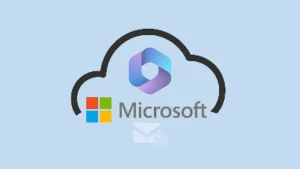In today’s cloud-first world, businesses heavily rely on SharePoint Online for document management and team collaboration. However, many users still prefer the familiarity and ease of accessing files through Windows File Explorer. One popular solution is mapping SharePoint as a network drive on your Windows PC. In this blog, we’ll cover what it means, why it’s useful, and how you can map SharePoint Online using both manual and professional methods.
What is SharePoint & Network Drive?
SharePoint – SharePoint is a web-based platform developed by Microsoft 365 that helps teams store, organize, share, and access information from any device. It acts like a central hub where users can collaborate on documents, manage content, and automate workflows, all within a secure environment. SharePoint online is also a part of the Office 365 subscription plan.
Network Drive – in a local area network (LAN), a network drive acts as a common storage space. It might be a real device or a virtual setup, allowing users across the network to access and manage shared files conveniently.
Why map SharePoint online as a Network Drive?
Mapping SharePoint as a network drive offers several compelling advantages; we have mentioned a few:
- Quickly drag and drop files without needing to open a browser.
- When it comes to storing files, SharePoint stands out. With features like powerful security, version control, and more, it often outperforms regular network drives.
- Bulk operations like copying, pasting, and moving files are more seamless.
- Users are more comfortable working within Windows Explorer than web-based interfaces.
- By moving to SharePoint, you can bring all your storage together, manage user access, and structure your data to support your company’s goals.
- Some methods allow syncing for offline work, automatically updating when back online.
- Integrate SharePoint into daily file operations without needing to learn new processes.
- Moving your data to SharePoint becomes simple when you use a third-party migration tool.
Methods to Map SharePoint Online as a Network Drive on Windows
Mapping SharePoint as a network drive allows users to interact with SharePoint libraries just like a regular folder in File Explorer, making file management faster and more intuitive. There are two main approaches: Manual mapping and the use of professional tools. In this blog, we’ll break down each method for you. Let’s get started!
Method 1: Manually Map a SharePoint Online Site as a Network Drive
There is an option for mapping a SharePoint Online document library as a network drive using File Explorer.
Map SharePoint Online as a Network Drive: Through File Explorer
To map a SharePoint document library as a network drive, you’ll go through two main steps. First, add your SharePoint site to the list of trusted sites. Then, map it as a network drive. Let’s take a closer look at each step.
Step 1: Adding SharePoint Site to the Trusted Sites
- When your system is ready, search for ‘Internet Options’ to continue.
- Once the Internet Properties window opens, click on the Security tab.
- Select Trusted Sites, then click on Sites to continue.
- Type the SharePoint site address into the ‘Add this website to the zone’ box and press Add to continue.
- Head back to Internet Properties, press OK to shut it down, and click Apply to make sure the updates take effect.
Step 2: Map SharePoint as a Network Drive
- Navigate to your files by opening Windows Explorer.
- Give ‘This PC’ a right-click, and pick ‘Map Network Drive’ to get started.
- From the open window, pick a name for your drive, such as SharePoint.
- Type the web address of your SharePoint document library into the Folder section to set up the mapping.
- Select the checkboxes for ‘reconnect at sign-in and ‘Connect using different credentials’ based on what you need.
- Once done, tap the Finish button to wrap things up.
- In the window that opens, provide your Microsoft 365 credentials, then tap OK to continue.
Drawbacks of this method:
- You might face connectivity issues if the internet connection is unstable or interrupted during the process.
- Providing an incomplete or incorrect SharePoint URL can cause the mapping of SharePoint Online as a Network Drive to fail.
- If you store multiple copies of your data in different places and one becomes corrupted, all copies could be affected, leaving no backup secure.
- A lack of proper user permissions can prevent the successful setup of the network drive.
- When two people work on the same large file at the same time, it can cause conflicts and lead to data loss.
- Even after making the necessary changes, a system restart might be required if the drive mapping doesn’t function properly.
Professional Method:
Manual methods may work for light use, but they’re prone to timing out, limiting file transfers, and sometimes failing to authenticate. A professional tool is a must for the professional handling of SharePoint data. Switching to professional tools ensures a smoother, more secure, and scalable experience. Tools like ‘Shoviv SharePoint Backup Software’ ensure your data stays secure and the move happens seamlessly. Below are some prominent features of this software:
- Users can easily back up their SharePoint data, including document libraries, forms, style libraries, templates, and site assets.
- With its incremental backup feature, users can avoid duplicates and resume any interrupted backup tasks.
- It features a filter option, letting users select specific items based on file extension, library type, or sub-site.
- Users can schedule regular backups of SharePoint Online data, with options for daily, weekly, or monthly intervals.
- The scheduler also lets users set specific dates and times for backups, ensuring data is saved to their local drive exactly when needed.
- Additionally, this professional tool allows users to add multiple SharePoint sites for backup in one go.
- The software also enables seamless backup of all SharePoint versions directly to a local drive.
Ending Remark:
Mapping SharePoint Online as a network drive lets you easily access your files through File Explorer. Although the manual approach offers a solution, it is not recommended for professionals. Depending on your technical knowledge, you can select the method that works best for you — and that’s how you resolve the SharePoint mapping issue. Explore the Shoviv SharePoint Backup Tool and this utility by installing the demo version for free. It facilitates quick backup of SharePoint sites.
- How to Backup Computer to Google Drive (Cloud)? - June 9, 2025
- SharePoint Limited Access Meaning & How does it Works? - June 5, 2025
- Understanding SharePoint Premium Features, Cost, and Value - May 31, 2025


